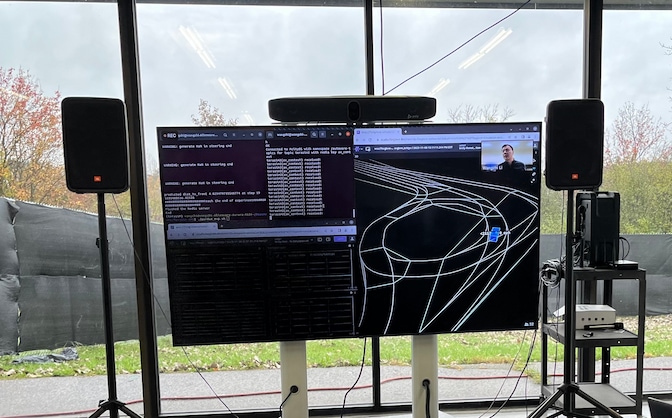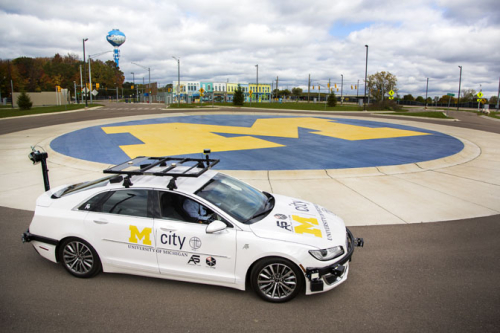From more than 320km away in Indiana, Purdue University researchers were able to test their AV technology using the University of Michigan’s (U-M) real-world test track in Ann Arbor, Detroit, using real and virtual cars, and pedestrians.
This first remote use of the track, known as the Mcity Test Facility, came 14 months after U-M announced plans to develop Mcity 2.0. Supported by a four-year US$5.1m grant from the National Science Foundation (NSF), the Mcity 2.0 project aims to offer the facility’s technology, data sets and physical test track to remote researchers in the US.
U-M researchers observed the remote test in November 2023 on a 65in monitor adjacent to the Mcity test track. The screen showed Purdue researchers on-campus in Indiana, and NSF representatives who joined remotely from Washington DC.

Standing in for Purdue’s research vehicle inside the Mcity Test Facility was Mcity’s AV research platform, programmed to use a path-planning algorithm developed by the Purdue team.
Prior to testing, U-M sent Purdue’s team a high-resolution digital map of Mcity’s track, as well as real-time information generated by the test AV at the track, including speed and position. Computer-generated cars, called background vehicles, were added to the simulation.
A digital map of the test facility showed the randomly generated traffic interactions between the AV and the background vehicles. The Purdue team did not know in advance what those interactions would be.
Yiheng Feng, an assistant professor of civil engineering at Purdue, said, “The original path-planning algorithm was implemented and tested in our own vehicle here at Purdue. Through the Mcity 2.0 test, we were able to identify problems related to safety and comfort and refine our original algorithm, all without leaving campus.”
According to the Purdue team, by overlaying digital infrastructure on physical infrastructure Mcity 2.0 can help overcome a barrier to validating research results and promoting the findings to encourage more research and real-world deployments.
Susan Margulies, NSF assistant director for engineering, added, “NSF’s investment in computing and communication infrastructure for Mcity 2.0, together with the creativity of the Mcity 2.0 team, is upgrading what was previously a well-equipped test track to provide a unique, world-class research resource that is accessible for all campuses.”
For more testing news, please click here.


